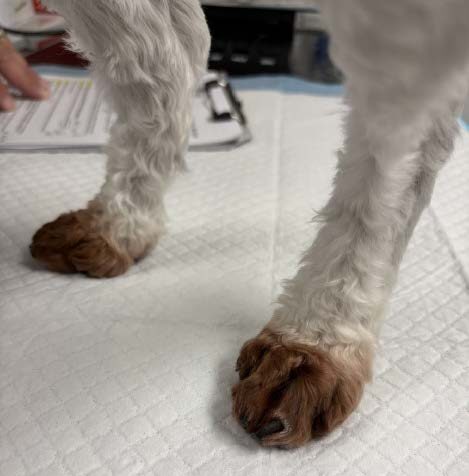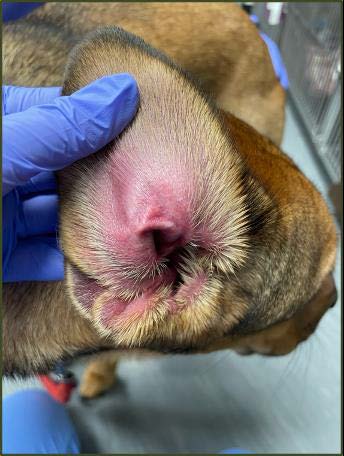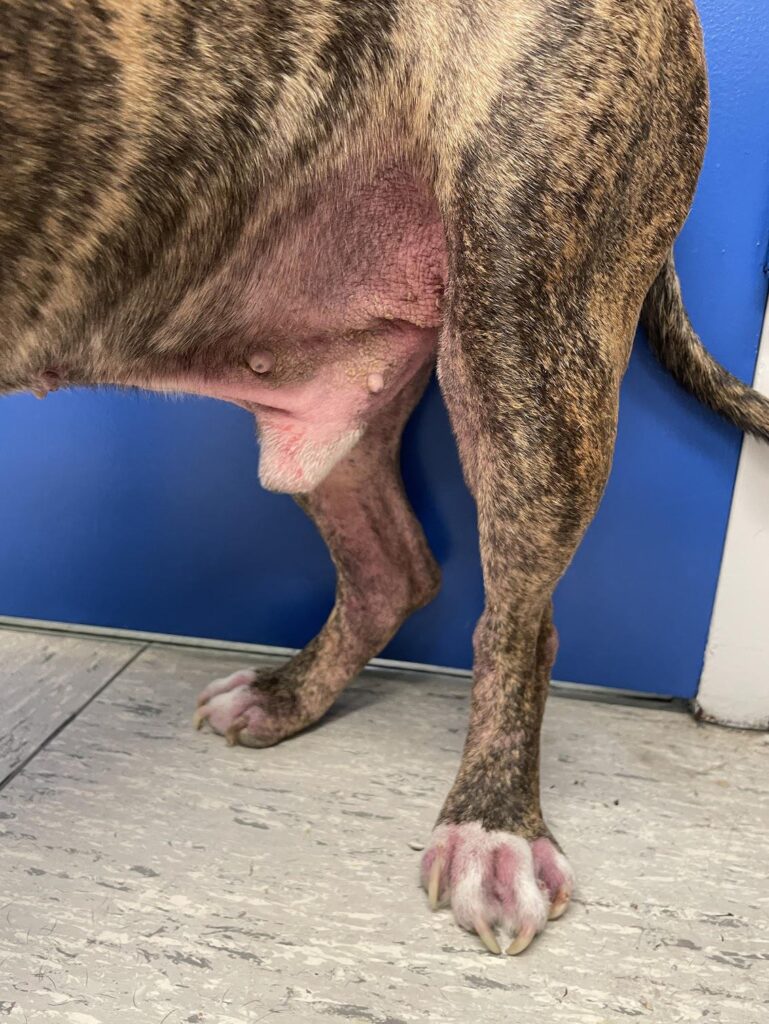In people, itchiness is a symptom that we can easily identify and express. In dogs, the most common cause of itchiness is allergic skin disease; dogs however express their itchiness in behaviors unique to ours, which can make correctly identifying (and addressing) this behavior a challenge. Other than the obvious scratching behavior we know too well, here are a few clinical signs to look out for which may indicate that your dog is itchy:

Red or brown feet – saliva contains porphyrins or natural dyes that will stain light-colored fur when heavily saturated. If your dogs feet are a distinctly darker color than the rest of their skin, this is a sign that whether or not they are doing it in front of you, they are foot licking or chewing. It’s important to note that dogs don’t chew their feet out of boredom or anxiety, it’s a behavior response to itch or pain, and warrants investigation when noticed.

Head shaking – most dogs will ‘reset’ from a resting or seated position by doing a full body shake that culminates with head shaking, however a dog with itchy ears will often do so excessively. In a dog whose head shaking disrupts other activities, happens more than 2-3x per day, or is accompanied by discharge, redness or an odor.

Alligator skin – chronic licking, biting, scratching, and/or infections leads to thickening of the skin, which can result in an often permanent change to the skin texture. Rather than being smooth and medium in thickness, the skin becomes thick, irregular in texture, and darkly pigmented or red.
If your dog is displaying signs of itch or allergy, a board-certified dermatologist can aid in helping to identify the underlying cause and find an effective management plan. If you think your pet is itchy and would like more information on our Dermatology service or to schedule an appointment please visit the Dermatology page.

Dr. Lindsey Citron is a Diplomate of the American College of Veterinary Dermatology. She graduated from the TUFTS University, where she majored in English Literature. She attended veterinary school at the University of Pennsylvania School of Veterinary Medicine before completing a 1-year Small Animal internship at Friendship followed by a 3-year dermatology residency program at the University of Pennsylvania School of Veterinary Medicine.
